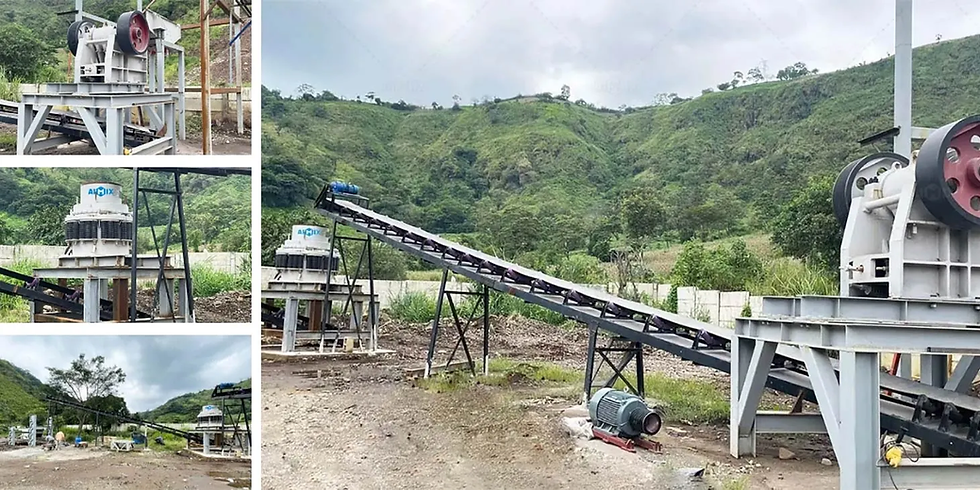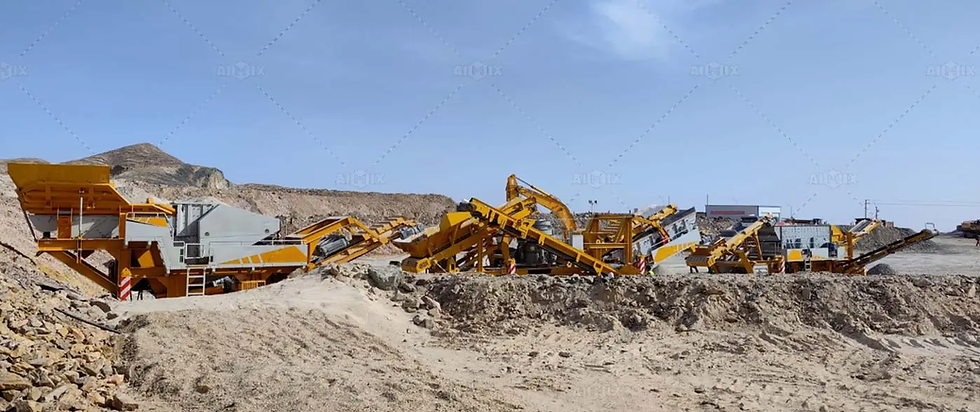Green Construction: How Gravel Crushers Support Sustainable Building
- aimixgroup china
- Apr 14
- 2 min read
Green building is no longer a fringe concept—it’s the future of urban development. As cities push for carbon neutrality and resource efficiency, gravel crushers have quietly become the unsung heroes behind the scenes. These machines aren't just pulverizing stone—they're transforming construction practices by enabling the use of recycled materials, reducing environmental impact, and promoting closed-loop systems. Their contribution goes far beyond crunching rock; they’re helping shape a more sustainable, responsible way to build.
Eco-Friendly Aggregates: The Role of Gravel Crushers
Gravel crushers are at the heart of material repurposing in modern construction. By converting demolished concrete, asphalt, and stone into consistent aggregate sizes, these machines breathe new life into waste. Crushed gravel isn’t just filler—it’s structural gold. Whether it’s used for road base, drainage layers, or as a core component in concrete mix, recycled gravel serves nearly every function of traditional aggregate, without the steep ecological toll.

This transformation reduces the demand for virgin material extraction. Instead of hauling new stone from a quarry miles away, aggregate crushers localize production—meaning less fuel, fewer trucks, and significantly lower greenhouse gas emissions. It's a simple equation: the more we crush, the less we consume from nature.
Lowering Environmental Impact on Construction Sites
Every construction site has its footprint. But with the integration of mobile gravel crushers, that footprint gets a whole lot smaller. Portable units allow contractors to process on-site debris immediately. No long-distance shipping. No giant stockpiles of unused rubble. No waiting around for aggregate deliveries that clog up tight schedules.
And here’s the beauty of it—by eliminating the need for repeated transportation to and from quarries, gravel crushers dramatically cut emissions. Fuel savings multiply, especially on large-scale infrastructure projects. Additionally, the reuse of on-site materials significantly reduces the volume of landfill waste, conserving local landfill space and limiting long-term ecological damage.
Plus, many modern gravel crushers are equipped with energy-efficient drives, advanced dust suppression systems, and noise-dampening technology. So, they’re not just green in outcome—they’re cleaner in operation too.

Boosting Circular Economy in the Building Industry
In a world chasing sustainability, circular economy principles are key—and gravel stone crushers make that loop possible. Recycled aggregates are no longer viewed as second-class citizens in the material world. Thanks to advances in crushing technology, they now meet stringent quality standards required for structural use.
That’s a win for green builders aiming for certifications like LEED (Leadership in Energy and Environmental Design). Recycled content points, waste reduction credits, and regional material sourcing can all be supported by on-site gravel processing. It turns yesterday’s demolition waste into today’s building block—quite literally.
When construction companies adopt these practices at scale, they set off a ripple effect across the industry. Equipment suppliers, contractors, architects, and policymakers all begin to reframe their approach to sustainability. In this light, gravel crushers become tools for regenerative construction, not just production equipment.
As green construction continues to evolve, one thing is clear: the humble gravel crusher plays a mighty role in moving the industry toward a more sustainable future—one crushed stone at a time.



Comments